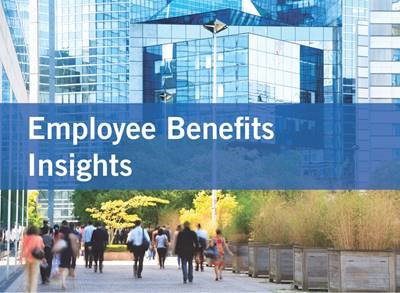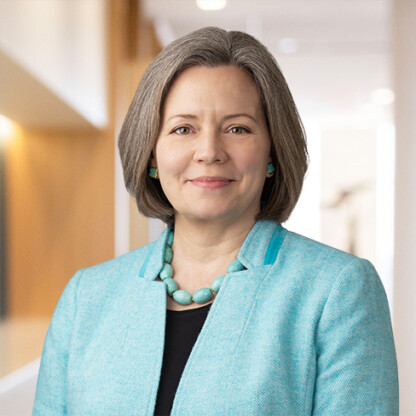Diving Into SECURE 2.0: Changes to the Minimum Required Distribution Rules

The SECURE 2.0 Act of 2022 (SECURE 2.0) makes significant changes to the legal and administrative compliance landscape for U.S. retirement plans. Foley & Lardner LLP is authoring a series of articles that take a “deep dive” into key SECURE 2.0 provisions that will impact how employers structure and administer their 401(k) plans, pension plans and other types of employer-sponsored retirement plans.
In this article, we explain in more detail the changes that SECURE 2.0 made to the required minimum distribution (RMD) rules applicable to retirement plans.
The RMD rules address when retirement plans must make distributions to participants during their lifetimes, and when beneficiaries of deceased participants must receive the death benefits owed under such plans. The original SECURE Act, passed in 2019, already significantly changed the RMD rules, such as changing a terminated participant’s RMD age from age 70½ to 72, and changing the period over which beneficiaries may receive payments, including adding a new 10-year payment period for certain designated beneficiaries. You can learn more about the RMD changes made under the SECURE Act of 2019 here.
SECURE 2.0, which was enacted in late 2022, makes even more changes to the RMD rules, as discussed below.
Changes to the Participant’s RMD Age (Effective in 2023)
As mentioned above, under the SECURE Act of 2019, the RMD age for a terminated participant increased from 70½ to 72 effective in 2020. SECURE 2.0 again changes the RMD age to 73 in 2023, and ultimately to age 75. The chart below highlights the changes to the RMD age at relevant points in time.
|
If a participant turns age… |
In the year… |
Then RMDs must begin by… |
|
72 |
2022 |
April 1, 2023 |
|
73 |
2024 |
April 1, 2025 |
|
73 |
2025 – 2031* |
April 1 of the following year |
|
74 |
2033* |
April 1, 2035 |
|
75 |
2035 and later |
April 1 of the following year |
* SECURE 2.0 contains an error regarding the effective date to transition from the RMD age of 73 to age 75. The above is our best guess as to how this might be corrected by Congress when they pass technical amendments to SECURE 2.0.
For defined benefit pension plans, similar to the SECURE Act of 2019, Congress did not amend the provisions in the Internal Revenue Code that require an actuarial adjustment to be made to benefits that commence after a participant’s age 70½ to reflect the delay in payment.
No RMDs Required from Roth Accounts (Effective in 2024)
Another change made by SECURE 2.0 to the RMD rules is to no longer require RMDs to be made to participants during their lifetime from their retirement plan Roth accounts, starting with the 2024 calendar year. This aligns the RMD rules applicable to Roth accounts with those applicable to Roth IRAs. A participant who is required to begin RMDs due to a termination of employment in 2023, must still receive their 2023 RMD from their Roth account by April 1, 2024. Whether a participant who has commenced RMDs before January 1, 2024 may stop taking RMDs beginning in 2024, will depend on whether Internal Revenue Service guidance permits it. Under current law, once RMDs begin to be paid to a participant during their lifetime, those distributions must continue at least annually.
RMD Rules for Defined Contribution Plans that Include Annuities (Effective in 2023)
It is apparent from some provisions in SECURE 2.0 that Congress is trying to make annuity contracts within defined contribution plans more palatable. Before SECURE 2.0, RMDs from annuities held within a defined contribution plan were generally subject to the RMD rules applicable to defined benefit pension plans. With passing SECURE 2.0, that is no longer the case.
First, SECURE 2.0 provides that a defined contribution plan does not violate the RMD rules if an annuity contract held in a participant’s account provides for the following benefit payments on or after the annuity starting date:
- An annual increase in the annuity payments by a constant percentage that is less than five percent each year;
- A lump sum that serves to either shorten the annuity period or commute future annuity payments, in whole or part, as long as the lump sum is calculated using reasonable actuarial assumptions, or a lump sum payment that is an acceleration of up to the next 12 months of annuity payments, without regard to whether the overall annuity payment period is shortened or payments are then suspended for the acceleration period;
- Payments in the nature of dividends or similar distributions; or
- A death benefit equal to the excess of the annuity premium payment reduced by payments made.
Many of these changes to annuity payments would not otherwise be permitted under the RMD rules.
Second, SECURE 2.0 provides that if a defined contribution plan permits a participant’s account to be partially invested in an annuity contract, then the annuity payments can be considered when calculating the RMDs owed by the plan. Specifically, the RMD owed by the plan for any year is calculated by treating the value of the annuity contracts as part of the account balance from which RMDs must be paid, but then applying payments from the annuity contract towards satisfaction of the RMD.
Finally, SECURE 2.0 provides more lenient rules for qualified longevity annuity contracts (QLACs). A QLAC is a type of annuity that defers the commencement of benefits to no later than the participant’s age of 85. Under typical RMD principles, the value of an annuity would be included as part of the account balance to determine the RMD payment the participant must receive. QLACs, however, need not be included as part of the account balance, permitting the participant to take smaller RMDs until the QLAC annuity payments actually began, but only if the QLAC meets a laundry-list of requirements imposed by the Internal Revenue Service. SECURE 2.0 modifies some of these requirements. For example, prior rules said that the premiums paid for a QLAC could not exceed the lesser of 25% of the participant’s account balance or $100,000. SECURE 2.0 eliminates the 25% limit and increases the dollar amount to $200,000.
RMD Rules for Special Needs Trusts (Effective in 2023)
The SECURE Act of 2019 placed limits on the ability of beneficiaries of defined contribution retirement plans to receive lifetime distributions after the participant’s death. Special rules apply to certain beneficiaries, including beneficiaries under a special needs trust that is the designated beneficiary for the participant’s account. SECURE 2.0 allows that special needs trust to provide for a charitable organization as the remainder beneficiary without causing the loss of the special rules.
What to Do Now?
Plan sponsors that wish to implement these provisions will need to work with their plan recordkeepers to change the plan’s administrative processes. While these provisions are technically not mandatory (for example, a retirement plan could continue to mandate that distributions begin at age 72), it may be difficult to administer plans appropriately, and may be confusing for participants, if these new provisions are not adopted. For example, RMDs cannot be rolled over. If a plan continues to mandate distributions at age 72, it would nonetheless have to allow that age 72 distribution to be rolled over, because legally, it is not an RMD.
Plan sponsors should also review summary plan descriptions and other participant communications to see if updates are needed. SECURE 2.0 does not require plan amendments to reflect these new rules until the last day of the first plan year beginning on or after January 1, 2025 (2027 in the case of governmental plans).
 |
As part of Foley’s ongoing commitment to provide legal insight to our clients and colleagues, our Employee Benefits and Executive Compensation Group has a monthly newsletter we call “Employee Benefits Insights,” where we provide you with updates on the most recent and pressing matters concerning employee benefits and other related topics. Click here or click the button to the left to subscribe. |
